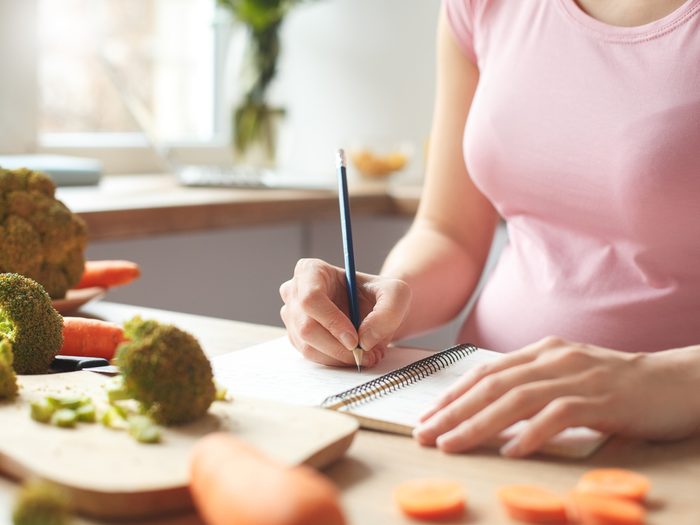
Plan it out
You don’t need to spend hours mapping out a week’s worth of meals, but try planning two or three dishes at a time, suggests Claire Tansey, author of Uncomplicated: Taking the Stress Out of Home Cooking. Having recipes and the relevant ingredients on hand can not only relieve stress but also make it faster to throw dishes together when you have limited time.
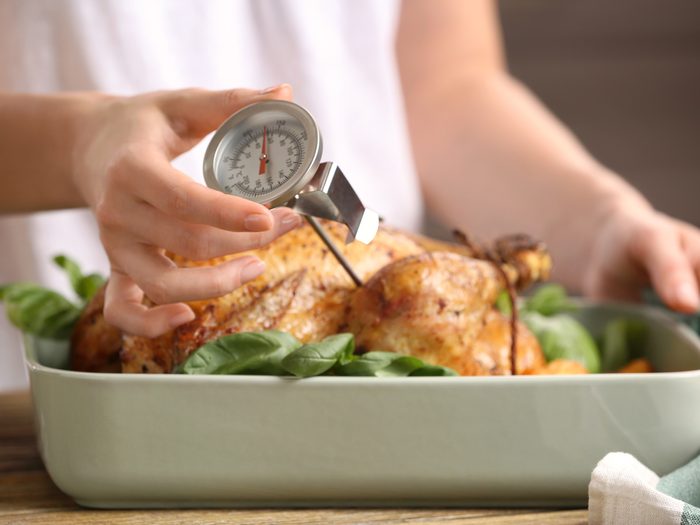
Get the right tools
“Having a good knife can make or break your food prep,” says Rachel Caven, a nutritionist and clinic director at Caven Nutrition Group in Ottawa. Make sure that you have the basics on hand for meal prep, including a high-quality peeler, meat thermometer, blender or food processor and cast iron pan. These investments can make a huge difference in how fast and enjoyable your cooking experience will be.
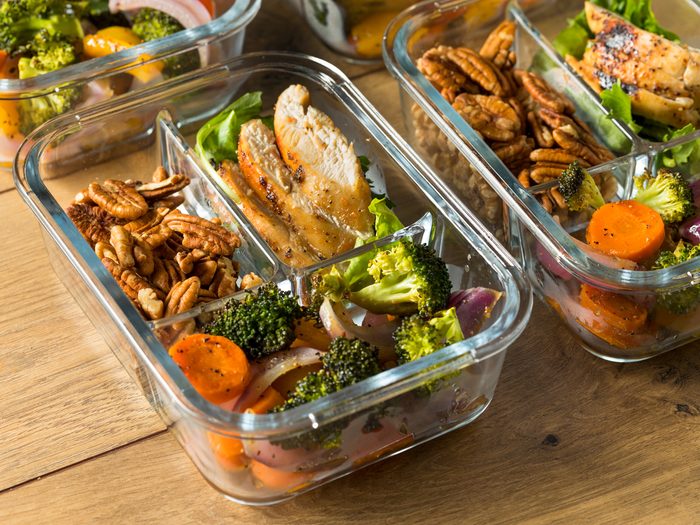
Do favours for your future self
Double or triple your recipe every time you cook, suggests Tansey. That way, you can freeze the leftovers or portion them out for meals during the week. “It’s the same amount of work to make a double batch as it is to make one batch,” says Tansey.
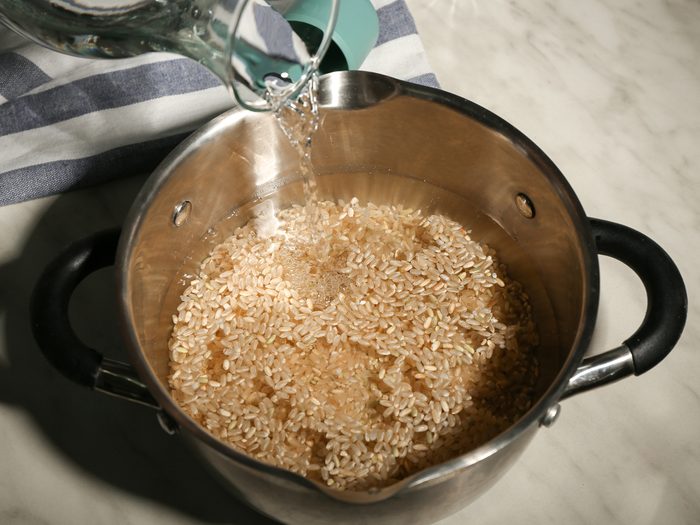
Prep the building blocks
Love whole grains but can’t find the time to cook them on the regular? Us, too. That’s why Tansey suggests prepping time-consuming staples like brown rice, farro, beans and sauces in advance and stashing them in the freezer. Why freeze them? Because they are rich in moisture and won’t last long in the fridge.
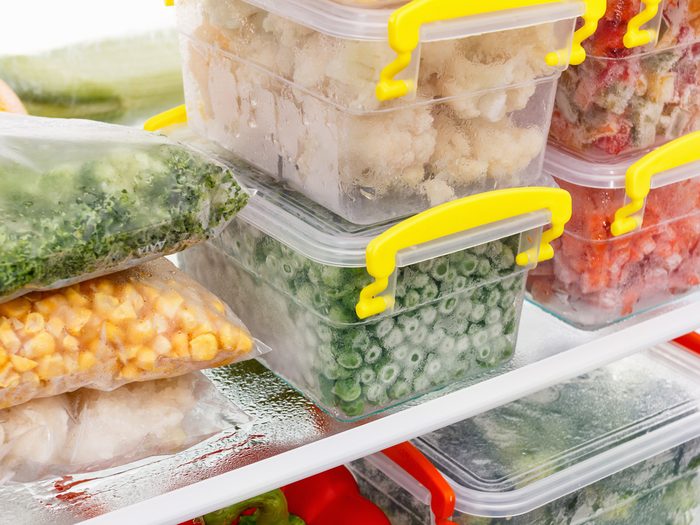
Get organized
Speaking of the freezer, how can you make the most of yours? After batch cooking, put your cooled leftovers into a freezer bag, squeeze out the air and place it on a small baking sheet in the freezer to freeze flat. Then you can load your freezer like a bookshelf, recommends Tansey. (If you don’t want to use plastic, you can use glass containers, but remember to leave some space because liquid expands.) When you’re ready to thaw your frozen meal, leave it overnight in the fridge or use your microwave oven to defrost it if you’re in a hurry. (Here are some tips for organizing your fridge.)
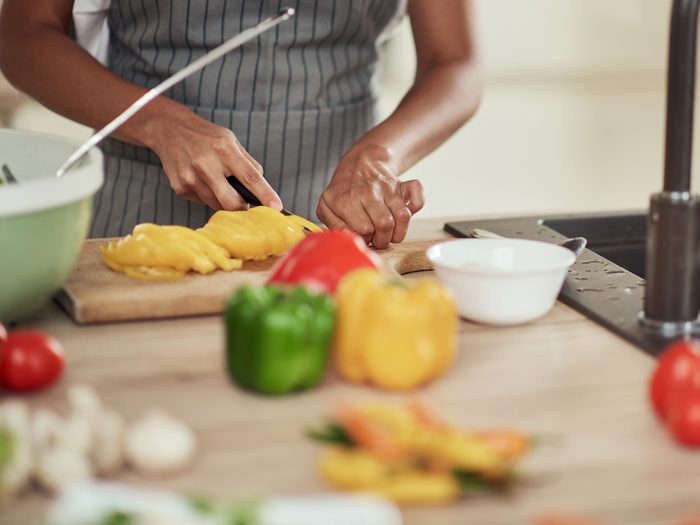
Practice smart crisper management
Once you’ve done your shopping, organize your fridge so that you can see (and use) the veggies that will go bad the quickest, suggests Tansey. If you’re the type of person who won’t eat veggies until they’re prepped, rinse and chop them. But make sure to eat the softer ones, such as peppers and snap peas, first, recommends Caven.
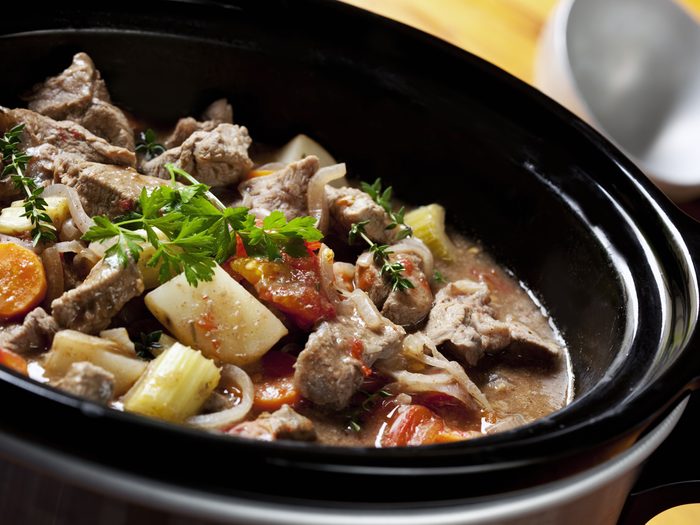
Try one for all
From a one-pot dish to a slow cooker meal to an Instant Pot, have one big meal that you can prep (and even cook) in advance, says Caven. It’s a time and sanity saver.
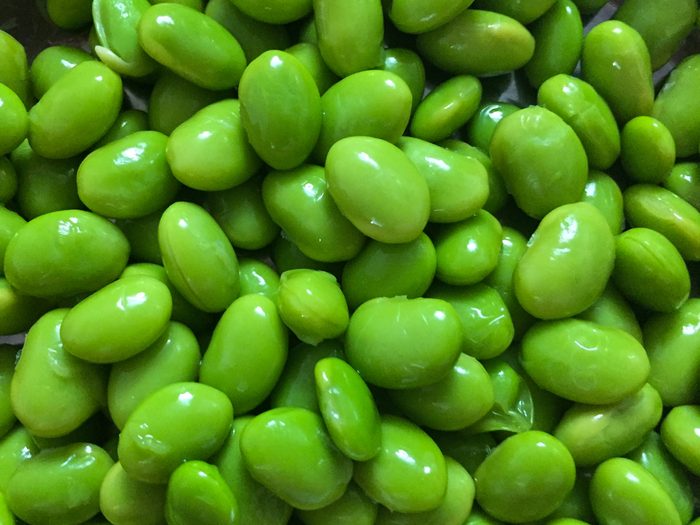
Don’t forget fast foods
We’re not talking takeout. Keep staples like edamame, corn and peas, which work easily as sides to your meal, in your freezer. Frozen vegetables are often a better choice, says Tansey. “There’s nothing wrong with paying for convenience and buying stuff that’s pre-chopped,” says Caven. Vegetables like butternut squash and beets can be time-consuming to prepare, but frozen and pre-cut versions are easy to throw into a pot or salad. “You don’t have to be all or nothing,” says Caven. Keep in mind, these frozen food are red flags for nutritionists.
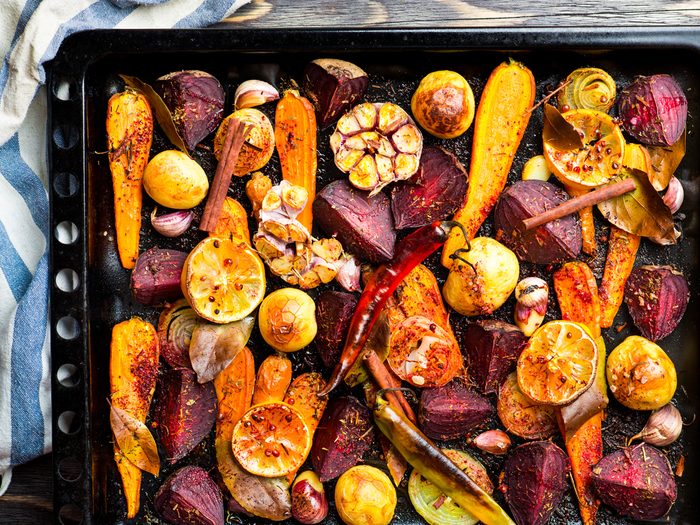
Multitask
Every time you turn on the oven, cook more than one thing. Throw some vegetables in a pan to roast, prep a pot of steel-cut oats or, while you’re cutting up veggies for a meal, stash some in a separate container for easy snacks for kids (or yourself!).
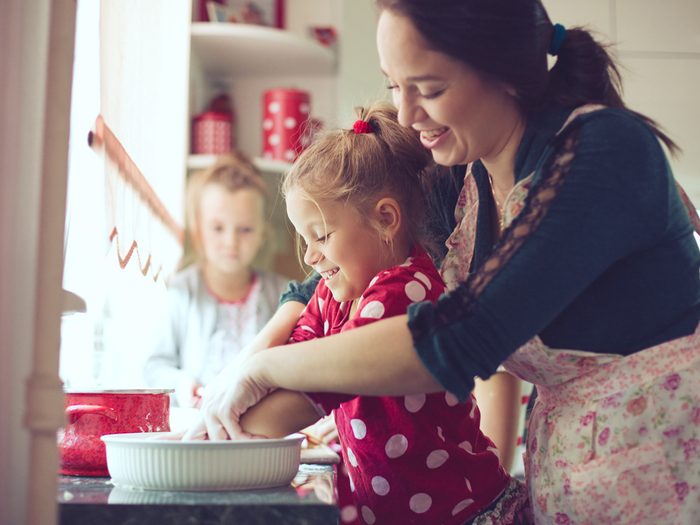
Get your kids involved
Depending on their age, children can be a great help in the kitchen, and it helps them build life skills. But do it on the weekend, when everyone is less stressed, suggests Tansey. Get your kids to empty the dishwasher or act like your sous-chef for simple tasks like tearing up kale.
Next, check out the best allergy-free snacks for kids.
